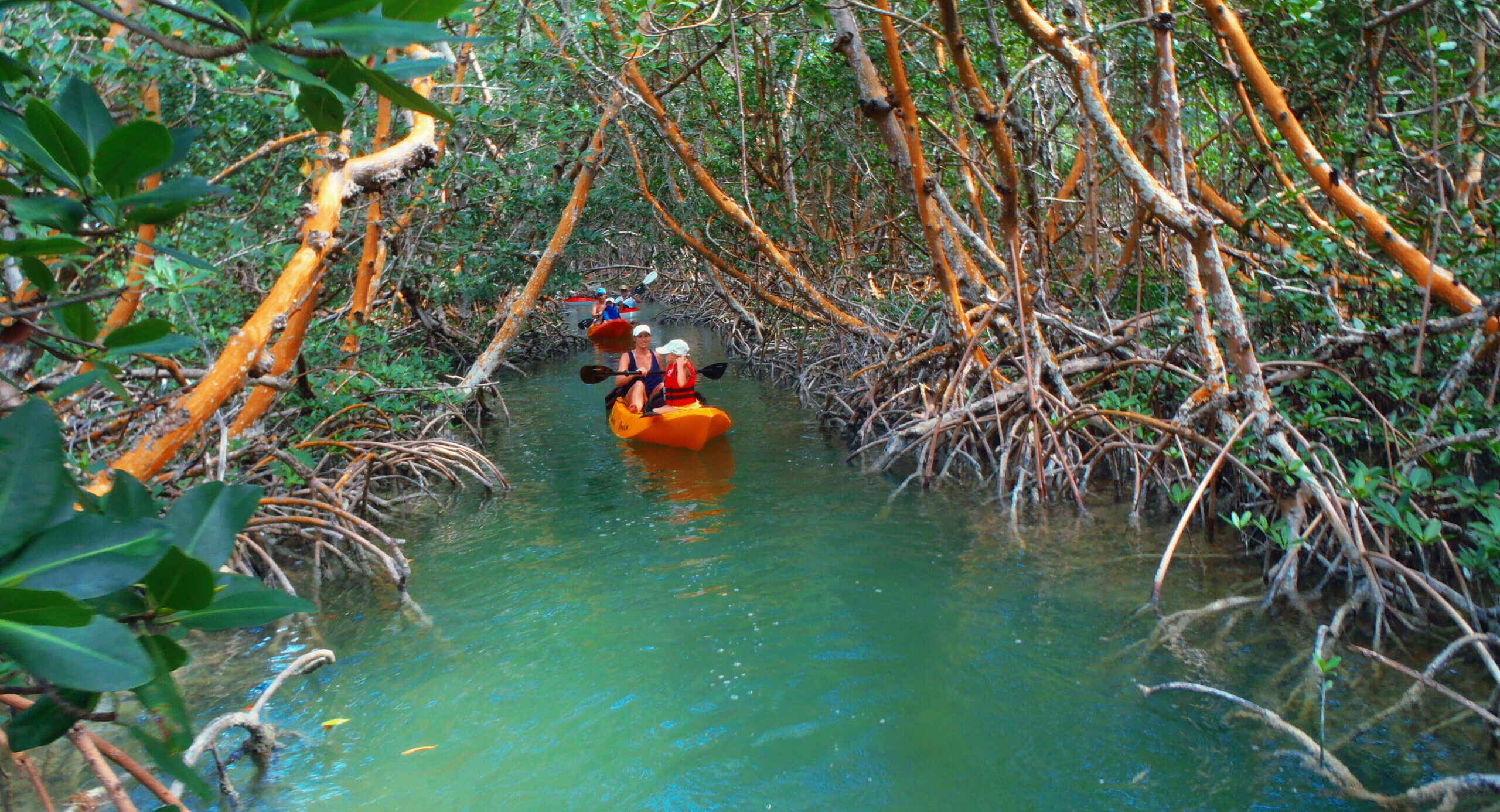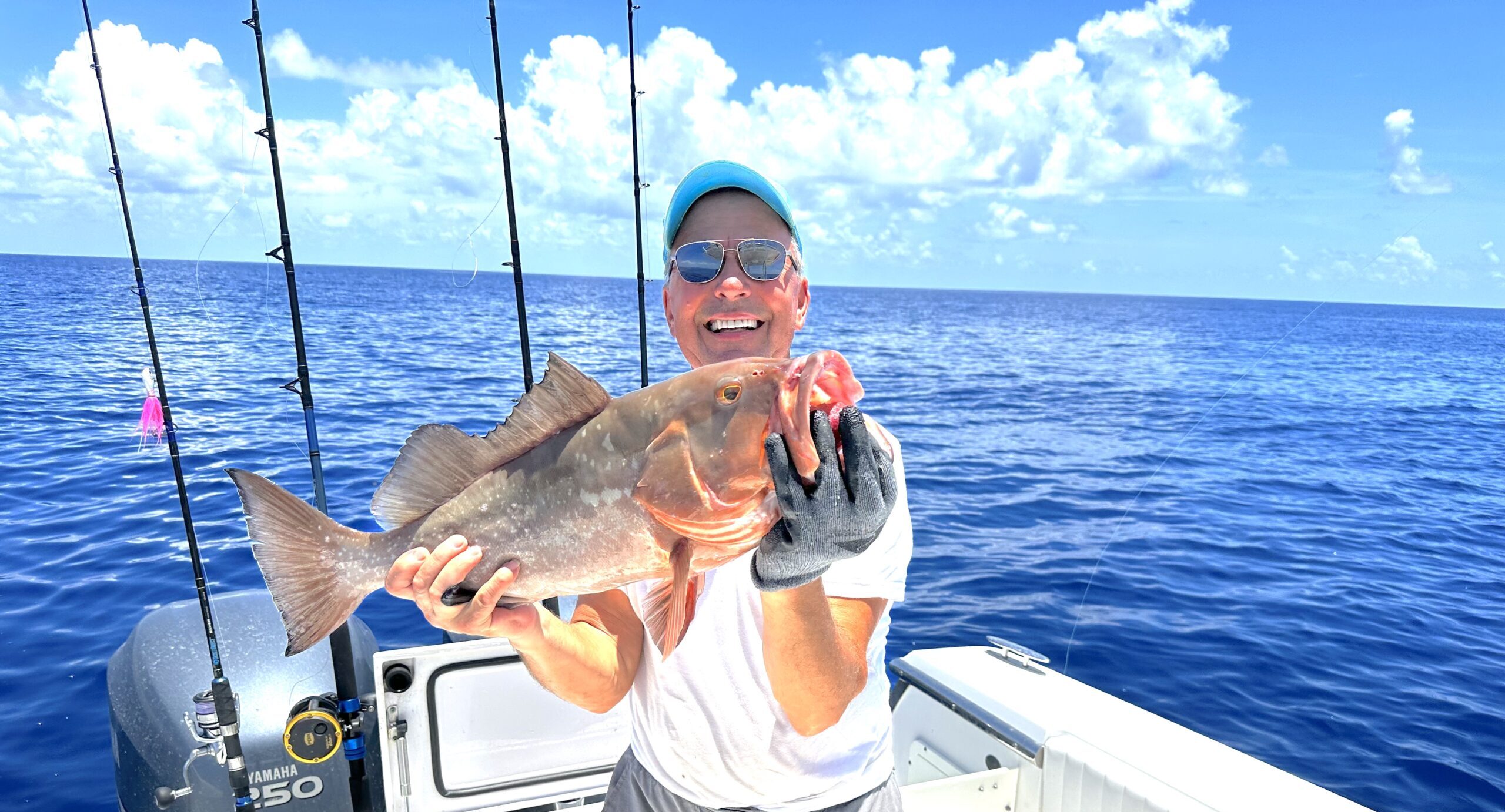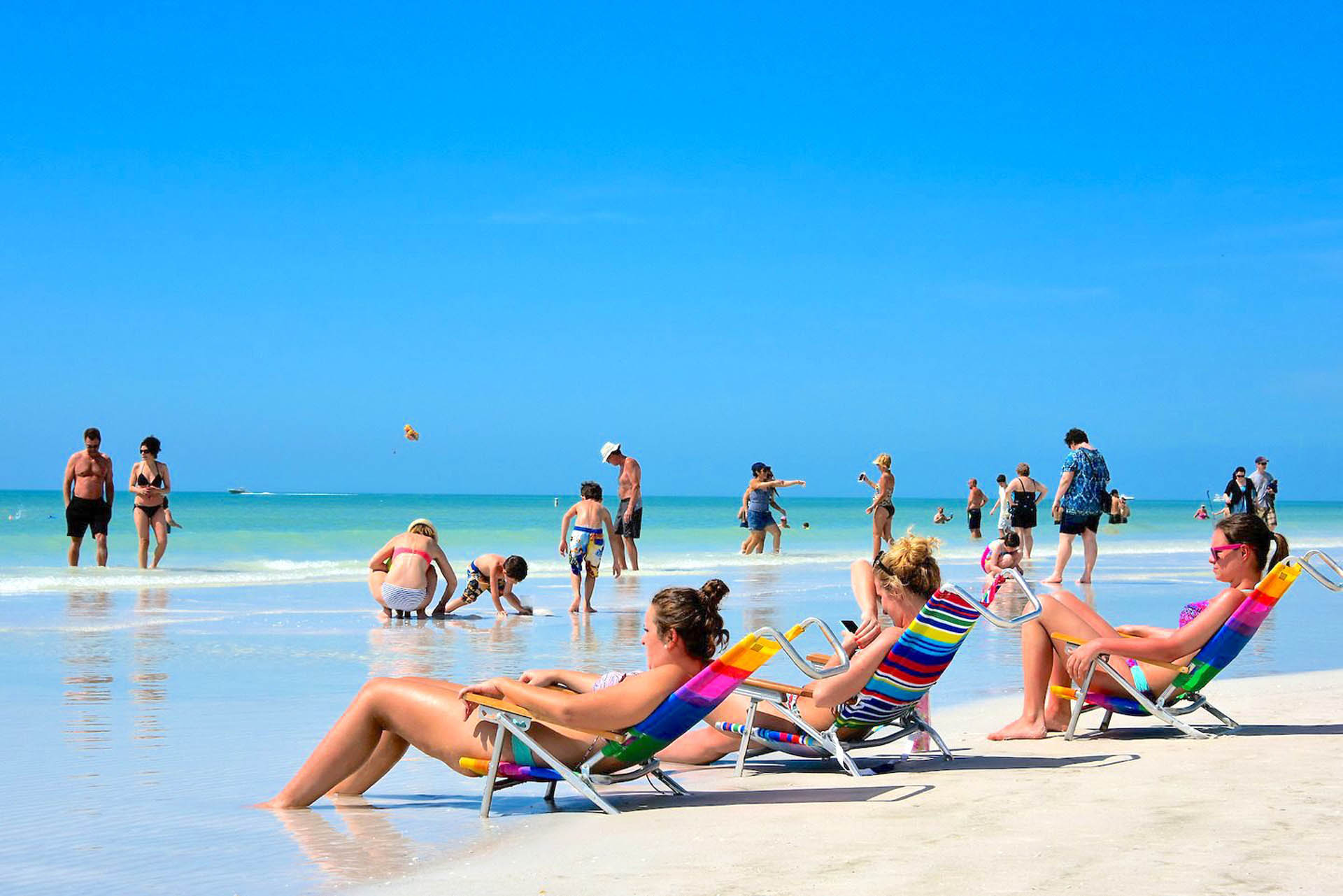PADDLE BOARD AND KAYAK GUIDE SIESTA KEY
Why is Siesta Key a top spot?
If you’re looking to explore the waters of Siesta Key and Sarasota County by paddle boarding and kayaking this is a complete guide to all the best of this area. Whether you’re a seasoned pro or just figuring it out, the calm water, abundant and non-threatening wildlife and stunning scenery here make it a top destination for paddlers. Here’s what you need to know to get started and make the most out of an outing.
Ideal Conditions: If you were ever going to paddle, this is the time to do it. The waters around Siesta Key and Sarasota Bay are calm clear and shallow. This makes paddling accessible for everyone, whether you’re a newbie or have been at it for years. Gentle waves, light currents, and absence of underwater threats mean you can focus on paddling without worrying about falling or drifting into a bad spot.
Killer Scenery: Google “Florida paddle boarding” and nine out of 10 images will be our location. Imagine gliding over seagrass beds or a limestone reef, weaving through mangrove tunnels, catching a sunset over the Gulf of Mexico or sunrise on the bay. The views here are all Instagram worthy and with so many environments, there’s always something to nearby to explore.
Wildlife Encounters: While you’re out there, keep an eye out for dolphins, manatees, sea turtles, and a variety of fish and birds. You’ll find curious dolphins and manatees might hear the rubbing of the paddle against your kayak or board and decide to swim with you for a while. These encounters make paddling here something you won’t forget anytime soon.
TOP PADDLE BOARDING AND KAYAKING SPOTS
Siesta Key Beach
Environment: Known for its powdery white sand and clear, aqua waters, Siesta Key Beach is a must. The shallow areas near the shore are great carefree experience if you’re just getting started. More experienced paddlers can scan for waves breaking offshore or more lightly colored patches of water to venture out to offshore sand formations. Sandy cays, lagoons and bars come and go with the currents but are typical in the middle and northern part of Siesta Key Beach. Cays and lagoons will be between 10 and 30 yards from shore, but shallow sandbars could be up to 100 yards from the beach.
Wildlife: Don’t expect colorful fish, but lookout for dolphins, manatees, conch, sand-dollars, and seabirds like pelicans and gulls. Manatee and dolphin will also give you a visit when they’re interested. While dolphin get all the attention, the Brown Pelican species is also here in abundance and easily the most exotic animal you will see on your trip. They fly with a wingspan of 6 to 8 feet, have a 12-inch beak and can hold 3 gallons of water and their throat.
Getting there alone: Any Siesta Key Beach access can be used but Access #2, #10 and #13 have no parking. If you have any trouble finding parking, try the public beach with hundreds of spots available. Check with your rental company to see if they will deliver a board to the beach for you.
Tips: Hit the beach early in the morning or late in the afternoon to get the calmest water and best temperatures. This is also when dolphin and turtle are most active. Late afternoon thunderstorms are common and to be avoided. However, these storms usually pass in less than an hour and leave behind calm water, cooler air, and cloud incredible formations that produce an amazing paddling experience.
Favorite Route: My favorite route is paddling south to Point of Rocks Reef or north to explore the sand bar area of Big Pass. Point of Rocks is approachable for any skill level, but the Sandbar in Big Pass is for experts only and can expose you to boat traffic, deep water, current and wind.
Turtle Beach and Lagoon
Environment: Located on the southern end of Siesta Key, Turtle Beach offers a more secluded experience. Perfect for a relaxed paddle, and the nearby lagoon is a top spot for exploring. The beachside is less populated than Siesta Key Beach Proper and calm but expect deeper water beige colored sand. The nearby lagoon and bay area are brackish water and not the bright blue color found in other parts of the bay, but do include water trails through mangrove islands, a large bird preserve, and secluded beach at Palmer Point connected to the bay and gulf. Tour companies operate out of the lagoon.
Wildlife: You can see manatee, various fish, dolphin, turtle and birds. Sea turtles near shore are rare, but this is a big Gulf Coast nesting spot. The area is also home dozens of bird varieties like herons and egrets and there is a huge nesting area on the bay side in Jim Neville Preserve.
Getting there alone: The Turtle Beach parking lot has ample spaces each conveniently located. For the Lagoon enter the water near the boat ramp anywhere that looks good. Check with your rental company to see if they will deliver a board to the beach for you.
Tips: The lagoon is best at high tide when the water levels are higher and the wildlife is more active. Consider the heat, but the lagoon and bay are sheltered from the wind so anytime of the day will work.
Favorite Route: My favorite route is to enter in the lagoon and explore the water trails and birds in the mangrove islands. When it gets good and hot I cross from the bay to the Gulf at Palmer Point, take a swim and a rest on the beach then paddle back up to the parking lot. Not ready to leave? Hit Turtles on the Bay for a tropical drink to reward yourself.
South Lido Park
Environment: Lido Key has amazing water and South Lido Park is where the rich estuary of Sarasota Bay connects to the Gulf of Mexico. It has legitimate mangrove tunnels, stunning beach views, and even island bay beaches. It’s a mix of exploration and relaxation. Consider a tour company for this location. South Lido has great tour companies and some really special scenery so a guide will be worth the money.
Wildlife: Expect to see fish swimming below, birds nesting above, raccoons (day or night) and crabs along the mangrove roots. This is the most common spot on my list to see dolphin and manatee.
Getting there alone: Parking is available in South Lido Park. It’s only 8 miles from Siesta Key but mind the traffic. Getting there from Siesta Key during rush-hour or beach times in season could take close to an hour.
Tips: Take your time in the mangrove tunnels, slow and steady wins the race here. Get a guided tour to ensure you will see the best of this very special paddling spot. Be careful, boaters understand this is a common area for paddlers but avoid the boating channel and don’t attempt paddling south to the boating islands in the middle of Big Pass. After paddling, you can try the dining options in Saint Armand Circle, but I recommend waterfront dining options like O’Learys Tiki Bar in Bayfront Park or the Old Salty Dog set on New Pass.
Point of Rocks Reef
Environment: Point of Rocks is located at the southern end of Crescent Beach on Siesta Key. It’s known for the unique limestone rock formations that extend into the Gulf of Mexico and stretch 1 mile in length from Crescent Beach to Sanderling lagoon. These rock formations create a unique underwater landscape and attract a diverse array of marine and land life, making it an excellent spot for exploration on both land and sea. The abundance of marine life makes it a fantastic spot for nature lovers and photographers.
Wildlife: The rock formations at Point of Rocks are a haven for various species of fish, conch, giant mussel, crabs, chameleon, and other sea and land creatures. You might spot colorful tropical fish, starfish, and even the occasional sea turtle.
Getting there alone: Park at the public access #12 on Crescent Beach. From there it’s about a half-mile paddle south along the beach. Once you reach the rocky outcroppings, you’ll know you’ve arrived. The short trip is well worth it, as the scenery and paddle boarding experience are exceptional.
Tips: Hit the beach early in the morning or late in the afternoon to get the calmest water and best temperatures I and best chance of finding parking. This is also when dolphin and turtle are most active.
Favorite Route: My favorite route is paddling out at Crescent Beach and heading south 1.5 miles to Sanderling lagoon, hugging the reef along the way. Sanderling lagoon is a deep-water spot and one of the only places on the island I encounter sea turtle in the water. Point of Rocks is suitable for any skill level, but when in front of the reef stay safely outside the breaking waves to avoid being pushed toward the rocks. Non-paddlers in your group can stay behind and enjoy Crescent Beach or it’s nearby island bars.
Sarasota Bay at Nora Patterson Park
Environment: Sarasota Bay is one of 28 estuaries of national significance and the largest and deepest coastal bay between Tampa and Charlotte. This area offers plenty of paddling options including sandy islands and bars, mangrove woods, grass flats, and open waters. It’s great for both short and long paddling adventures. NOTE this spot does not have a launch. Access to the water is off seawall only so water shoes are a good idea and high tide is the easiest access.
Wildlife: The bay is a hotspot for dolphins, manatees, and various fish. Birdwatchers will enjoy spotting ospreys, pelicans, and roseate spoonbills.
Getting there alone: Parking is available in Nora Paterson Bay Island Park and across the bridge on the mainland side. This is on Siesta Key just 2.5 miles from the Village.
Tips: The spot does not have a launch. Access to the water is off the seawall only and high tide is the easiest access. Water shoes are a must except for the most experienced and adventurous. To really do it all here you will have to experience some oyster beds and barnacles, even the mangrove trunks on the beaches will be a nuisance without them. If you don’t have water shoes and don’t want to spend the money, bring speakers with you for the launch and walking on the islands. If the launch at Nora Patterson Park looks intimidating head over the bridge to the mainland side and access via the exposed sand area on the north. Boaters understand this is a common area for paddlers but be safe and stay close to the islands when you can.
Favorite Route: My favorite route is just to head between the Edwards Islands and paddle around the Roberts Bay area. Florida’s state constitution makes the islands public so try them out for special experience. At this location you’re about 1 mile from Publix, Walt’s Fish Market, Discount Liquors, Trader Joes, CVS, and a number of barbecue places. Consider picking up groceries and supplies while you’re there.
Myakka State Park
Environment: For the more adventurous, Myakka State Park provides a raw paddling experience. This park is one of Florida’s oldest and largest with wetlands, pine forests, swamps, prairies, and oak woodland canopies. NOTE if you paddle here during warm weather you’re going to see alligator.
Wildlife: The park is home to alligators, various bird species, deer, and more. Paddle quietly and keep your distance to observe these animals in their natural habitat.
Getting there alone: Myakka State Park is about 20 miles from Siesta Key and with no traffic just a 30-minute drive.
Tips: If you go there during warm weather, you’re going to see alligator. As a kid growing up in Sarasota, we swam in unguarded ponds and creeks with alligators visible. Thirty years removed and living on the Jersey Shore, just thinking about this gives me goosebumps. I highly recommend a guided tour. Early morning or late afternoon is best for wildlife viewing. Check the park regulations before heading out. If you get there and don’t like the looks of it, there are plenty of other things to do in this park outside the water. There’s horseback riding, biking even driving us a tour. The scenery in Myakka is like another planet to anyone who hasn’t experienced it.
PADDLING BENEFITS
Benefits of paddle boarding and kayaking
- Full-Body Workout: Both activities engage your core, arms, legs, and back, giving you a full-body workout that builds strength and improves balance. It’ll get you a beach, body faster than anything and you’ll enjoy doing it.
- Low-Impact Exercise: They’re easy on the joints, providing an effective workout without the strain. From time to time the core workout is too much and can aggravate previous back injuries. To avoid this, kneel or sit and paddle like you would in a canoe.
- Mental Health: The rhythmic nature of paddling, balance required, and the peaceful environment are great for reducing stress and will get you in the zone fast.
- Connection with Nature: Paddling lets you get up close and personal with nature, offering unique wildlife encounters and scenic views.
PADDLING TECHNIQUES FOR BEGINNERS
Paddle boarding
- Proper Stance: Stand with your feet parallel and hip-width apart, knees slightly bent. Keep your back straight and gaze forward.
- Holding the Paddle: Grip the paddle with one hand on the top handle and the other a few feet down the shaft. The paddle blade should angle away from you. This is a traditional method, but don’t be afraid to mix up the grip to address, comfort or an area you want to work harder.
- Basic Strokes: To move ahead move the paddle forward and submerge the blade, then pull it back toward your ankle. Alternate sides switching hands grips to keep moving straight. For turning paddle in a wide circle on one side away from the board.
- Balance Tips: Start on your knees to get a feel for the board’s stability. Once comfortable, slowly stand up. Look at the horizon, not your feet. Looking down, will always make you fall so learn to feel the waves under board with your feet and knees. Sounds like a Star Wars thing, but it isn’t. Imagine riding a horse, a dirtbike, or skiing moguls with your torso in a fixed position, and your feet and knees absorbing the bumps below you.
- Safety Precautions: Always wear a life jacket and use a leash to avoid a situation where the board floats away from you. Watch for boats, and check weather conditions before heading out.
Kayaking
- Proper Seating: Sit up straight with your knees slightly bent and feet resting on the foot pegs.
- Holding the Paddle: Grip the paddle with both hands, keeping them shoulder-width apart. The concave side of the paddle blade should face you.
- Basic Strokes: To go forward dip one blade into the water near your feet and pull it back to your hip. Alternate sides to move straight. To turn, use wide strokes away from the kayak.
- Balance Tips: Keep your body centered with your head over your torso and avoid sudden movements. Use your core for stability.
- Safety Precautions: Always wear a life jacket. Check weather conditions before heading out and avoid strong winds and currents.
Kayak and paddle board tours and rentals
Discover the natural beauty of Sarasota County from the tranquility of a kayak. Whether you’re paddling through mangrove tunnels, exploring coastal estuaries, or gliding along scenic rivers, these top charters will provide unforgettable experiences on the water.
Almost Heaven Kayak Adventures, (941)-504-6296, www.almostheavenkayakadventures.com . Almost Heaven Kayak Adventures offers guided eco-tours and kayak rentals, allowing you to explore Sarasota’s coastal habitats at your own pace or with the expertise of a knowledgeable guide. From serene mangrove tunnels to bird-filled estuaries, you’ll discover the beauty of Sarasota’s natural landscapes.
SURFIT USA- Paddleboards & Surf, (941)952-8245, www.surfitusa.com . The highlight of the tour is paddling through the winding tunnels cut through the mangroves. Wildlife abounds on this paddle with mangrove crabs, interesting birds, fish, invertebrates, and even marine mammals. It is a great day on the water.
Ride & Paddle by Siesta Sports Rentals, (941)-346-1797, https://rideandpaddle.com . Ride & Paddle is now at the Bay Sarasota with nature tours and daily rentals for kayaks and paddleboards. Paddle with us among the mangroves and along the shoreline of the bay in the heart of downtown Sarasota.
Sea Life Kayak Adventures, (941)-400-2740, https://sealifekayak.com . Sea Life Kayak Adventures offers eco-friendly kayak tours led by experienced naturalist guides. Explore Sarasota Bay, Lido Key, and other scenic locations while learning about the area’s ecology, history, and wildlife.
Sarasota Bay Explorers, (941)-388-4200, www.sarasotabayexplorers.com . Description: Sarasota Bay Explorers offers kayak eco-tours led by certified naturalists, providing educational and immersive experiences in Sarasota Bay and its surrounding habitats. Explore mangrove islands, seagrass beds, and bird rookeries while learning about the importance of conservation.
Best times to paddle on siesta key
Early Morning Paddles: Early morning is often the best time to paddle. The water is usually calm, and the temperatures are cooler. Plus, you’ll have a better chance of spotting wildlife.
Late Afternoon Paddle: Late afternoon is another prime time. The sun is lower, the views are stunning, and it’s cooler. Plus, the sunset is a bonus.
Avoid Midday Heat: Avoid paddling during the hottest part of the day, especially in summer. The intense heat can be a killer.



